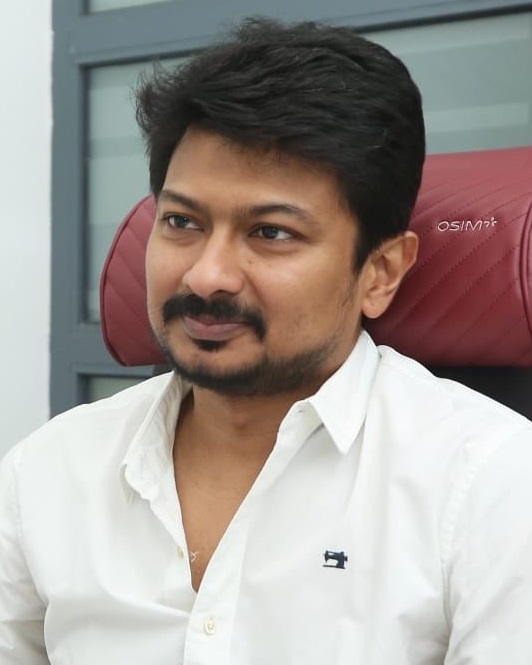Patriarchy or male dominance is not synonymous with Hinduism as some would like us to believe.
Udhayanidhi Stalin’s vicious, vulgar and unprovoked attack on Sanatan Dharma has raised my hackles. Enough is enough. The civility of practicing Hindus cannot be mistaken for timidity or meek acceptance of this vile characterization. The snide remarks, the wild and unsubstantiated accusations and the uncouth bad mouthing of Hinduism have to be effectively rebutted; the record needs to be set right so that the public is not hoodwinked by these suave merchants of hate constructing a false narrative.
Attempts to portray Hinduism as a callous religion that institutionalizes discrimination, advocates caste hierarchy and favours patriarchy is a politically and ideologically motivated propaganda.
Patriarchy or male dominance is not synonymous with Hinduism as some would like us to believe. The other day when I walked into my local neighbourhood temple, I was struck by the gender sensitivity that Hinduism professes; a fact that had escaped me till then. Right at the centre of the array of Hindu idols was the statue of Durga Mata: the embodiment of motherhood and female shakti. Lined on either side of Durga Mata were an array of other idols, most of them depicted as male-female pairs: Shiva and Parvati, Lakshmi and Narayan, Ram and Sita. In contrast, most other major religions are male centric; they do not have a place for a female God in the pantheon of their deities or if they do, they are relegated to a secondary status.
The campaign to depict Hinduism as a Brahminical religion is another lie; calculated strategy by its detractors to sow dissension among Hindus and make them vulnerable for conversion. Hinduism is an egalitarian religion. The most revered and popular Hindu icons do not belong to the so-called highest caste. Shri Ram is a Kshatriya and Shri Krishna belongs to the Yadav clan, a caste of cow herds. Moreover, Shri Krishna is depicted as a dark-skinned God; the word Krishna itself in Sanskrit translates as black indicating that in Hinduism even Colourism (discrimination based on color of skin) has no place.
The Bhagavad Gita clearly indicates that caste distinctions are defined by human traits: “The duties of the Brahmins, Kshatriyas, Vaishyas, and Shudras—are distributed according to their qualities, in accordance with their guṇas (and not by birth)”BG 18.41.
Having said that, we cannot deny that there is difference in precept and practice. How do we explain this difference, the horrific caste practices that we see in daily life?
Humans have, over the ages, distorted religious edicts to serve their own selfish interests, creating in the process, an unequal society. Caste today is a corruption of the society that we live in and not a derivative of Hindu religion per se.
This is why caste discrimination persists despite conversion to Christianity or Islam. Dalits who convert to Christianity are looked down upon by their fellow Christians and are forced to form separate Dalit Churches. Some Christians do not hesitate to flaunt their Brahmin heritage. The bishop of Niranam Diocese, GeevargheseMorCoorilos states that Syrian Christian families in Kerala routinely have gatherings to “proclaim the artificially cultivated upper-caste identity and lineage”. Syrian Christians, one of the world’s oldest Christian communities in Kerala believe that they are the descendant of high caste Brahmin families who were converted to Christianity by St Thomas in 1st century CE.
Even Farooq Abdullah, the Muslim leader of the NC, frequently refers to his Kashmiri Pandit Brahmin origin.
Religious conversion is not the solution to caste inequality.
An examination of the history of caste in the sub-continent over the last two millennia sheds further light on the attitude of non-Hindu religions towards caste and is a big eye opener. For over 2,000 years, political power in the sub-continent lay in the hands of non-Hindus.
During British rule that lasted over 200 years, Christian clergymen carried out an aggressive campaign of conversion with government support, targeting tribals and Dalit Hindus. Unfortunately, however, I do not come across a single government initiative aimed at uplifting the Dalits or eradicating caste practices.
Likewise, Muslim rulers over a period of 1,000 years made no conscious effort to address caste discrimination.
Surprisingly, even under Buddhism that held sway over India for more than 500 years until Hindu revival in the 8th century, we do not see notable examples of Dalit upliftment.
My big, direct and blunt query to one and all is: During this long period of Muslim, Christian and Buddhist rule was there a serious attempt to eradicate casteism or allay the sufferings of the Dalits?
The answer is “no”. So, when all these other religions shed crocodile tears on the plight of Dalits, I take it with not a pinch but a ton of salt. Casteism in Hindus as per these religions has to be highlighted—not to better the conditions of the downtrodden but to serve their own vested interests.
The only real attempt to uplift Dalits came after 1947 when a predominantly Hindu government came to power in Delhi post British withdrawal. India boasts of the most ambitious and most extensive of any affirmative action plan that the world has ever seen: the reservation program for Scheduled Castes and Scheduled tribes.
For all the calumny that is heaped on Hindutva, let me bring forth a lessknown fact. The much-pilloried Vinayak Damodar Savarkar, the foremost proponent of Hindutva, was one of the first individuals to advocate entry of Dalits into Hindu temples in the 1930s (Patit Pawan Mandir).
So, when Pratap Bhanu Mehtawrites, “defending Sanatan Dharma without acknowledging the horror of caste is moral duplicity”, I disagree.
Hinduism has acknowledged the horrors of caste practice and has made and is continuing to make amends. I do admit much more needs to be done. Therefore, to deliberately overlook the great strides that have been made post-Independence is nothing but deliberate obfuscation.
Hinduism, like other religions, has its deficiencies but it is one religion

